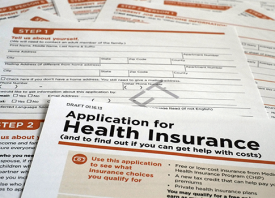 About the only thing that’s certain in healthcare delivery is that constant change will continue. And that, unfortunately, makes everyone’s marketing assumptions suspect. Keeping pace with a shifting landscape makes it more challenging to market a medical practice.
About the only thing that’s certain in healthcare delivery is that constant change will continue. And that, unfortunately, makes everyone’s marketing assumptions suspect. Keeping pace with a shifting landscape makes it more challenging to market a medical practice.
 About the only thing that’s certain in healthcare delivery is that constant change will continue. And that, unfortunately, makes everyone’s marketing assumptions suspect. Keeping pace with a shifting landscape makes it more challenging to market a medical practice.
About the only thing that’s certain in healthcare delivery is that constant change will continue. And that, unfortunately, makes everyone’s marketing assumptions suspect. Keeping pace with a shifting landscape makes it more challenging to market a medical practice.
Here are a few important-but-independent observations, factoids and tips that crossed our radar. Consider how each item—maybe all of them—could drive adjustments in your marketing thinking.
Some Americans will defer healthcare.
As the curtain gradually pulls back on affordable care in 2015, many people are shocked to find higher medical insurance premiums or deductibles or both.
“The Obama administration unveiled data showing that many Americans with health insurance bought under the Affordable Care Act could face substantial price increases — in some cases as much as 20 percent — unless they switch plans,” reports The New York Times.
Although the amount of increase varies, higher premiums are commonplace and most people will pay more for health insurance. It is reasonable to expect that many individuals—those who elect to keep their coverage—will be increasingly inclined to delay or avoid seeking healthcare.
Facebook may jump aboard the healthcare express.
You know about Apple and Google launching healthcare initiatives. Industry observer WeRSM (We Are Social Media) speculates that Facebook, the widely popular social platform, may be the next big player with health, fitness and wellness features.
“This comes as no surprise,” says WeRSM, “as the social network pretty much knows many things about our whereabouts, hobbies and lifestyle. Apart from this, Facebook is also focusing on creating support communities for people who suffer from certain conditions.”
Read the full article here. Speculation…yes, but don’t be surprised if the largest social media network gets aboard the health bandwagon.
Virtual doctor visits, and mobile communications with patients, will increase.
According to a survey of physicians by PricewaterhouseCoopers, as much as 10 percent of in-office patient encounters could shift to digital devices. Although the survey noted that not many doctors offer virtual visits presently, survey respondents said that such as shift could ease their daily workload. “Digitally-enabled care is no longer nice-to-have, it’s fundamental for delivering high quality care,” PwC’s Daniel Garrett said.
The adoption curve is moving rapidly, however. The PwC data revealed that mobile devices are helping doctors work more efficiently, and that nearly one in three physicians (31 percent) currently use a mobile device to communicate with patients. That’s up from 21 percent over the previous year.
What we assumed to be true yesterday in healthcare marketing is probably new or different today. What knew about the industry, or our communications endeavors, or our audiences is likely to morph again…so stay tuned. Be ready to make adjustments. We’ll keep our radar spinning.








